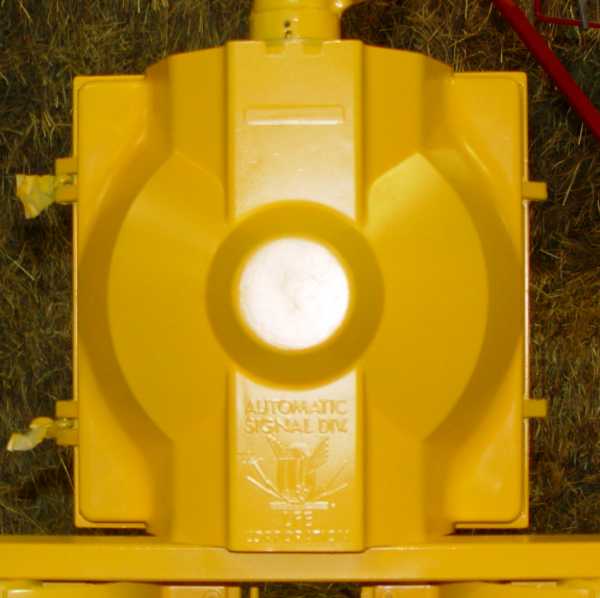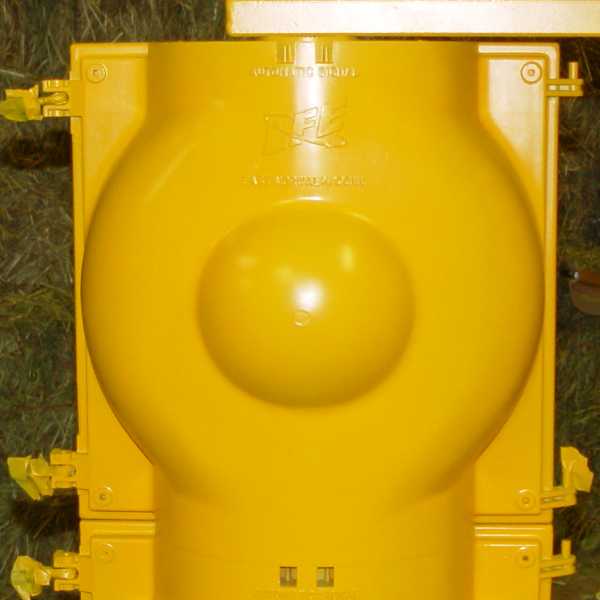Willis Lamm's
|
|
LFE Twelve Inch Dog House Signal |
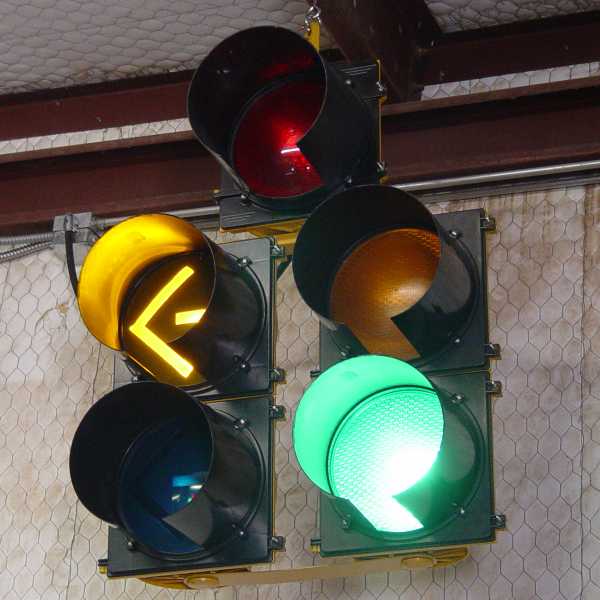
Click on any image to bring up a larger view in a new window.
 Protected left turns have been around since at least as far back as the 1940s. Early signals simply indicated a green arrow when the rights of way of turning traffic were protected.
Protected left turns have been around since at least as far back as the 1940s. Early signals simply indicated a green arrow when the rights of way of turning traffic were protected.
As traffic signal standards evolved, two changes affected protected new turn signals. Arrow indications had to be 12" in diameter. (8" arrows were not permitted in new signals.) A green protected turn arrow had to be terminated with a yellow arrow. (The green arrow couldn't simply go dark to indicate the end of the protected turn phase.) The end result was that signals that provided both protected left turns and left turn yield "green ball" indications were large and long - consisting of five sections. "Dog house" signals were designed to serve this purpose but not hang over traffic so low that they would require special mounting or be struck by tall vehicles. The red section was centered over a pair of green and yellow sections. The left lower section indicated the status of the protected turn. The right lower section provided the "through" indication. Traffic could still make left turns on the green ball indication but had to yield to oncoming traffic the same as with a conventional green light. On narrower streets, dog house signals could be used to provide indications to both left turning and through traffic. (For a more complete discussion on dog house indications and sequences, please Click Here to open a page in a new window.) This restoration used Laboratory for Engineering (LFE) signal heads. |
Typical intersection layout. The dog house hangs over traffic
with an in-line five section head post mounted on the far left corner.
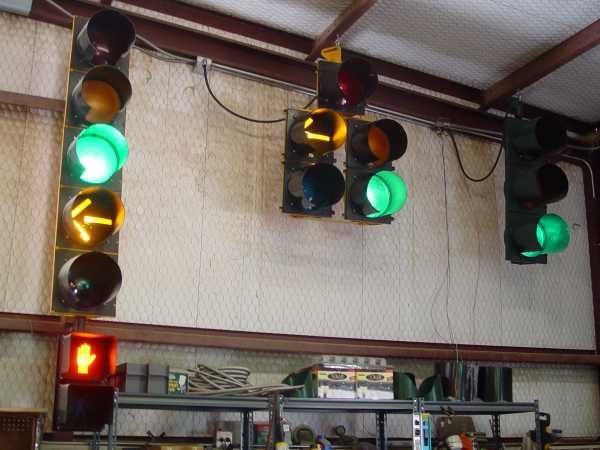
Google Street View. (Click image to enter Street View in a new page.)
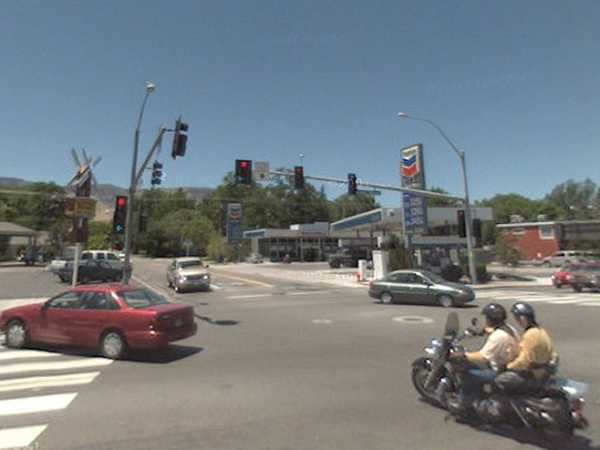
|
The widespread use of polycarbonate signals created a minor dilemma with respect to dog house signals. Traffic engineers quickly discovered that when the signals were attached to a rigid mount such as a mast arm, the top section could crack and fail due to wind loading on the two double sections held by the top section. This problem was made even worse if the signals had back plates.
Two solutions came about. Some jurisdictions simply used aluminum top sections and polycarbonate lower sections while others stiffened the entire signal through use of external bracing. In this reconstruction, I've used an LFE aluminum head for the top section and LFE polycarbonate heads for the lower sections. |
Aluminum top section with poly lower sections.
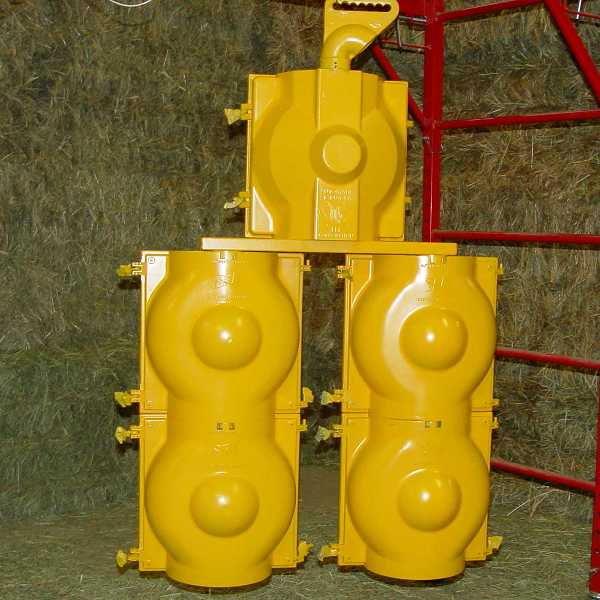
LFE Aluminum head with winged tire logo.
|
Polycarbonate sections with newer LFE logos.
|
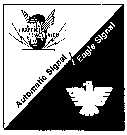 LFE is the successor to an old line of signals started by Charles Adler, Jr., known as Automatic Signal. This line was eventually taken over by Eagle Signal who also produced the Alusig and Durasig signals pictured in the intersection layout (above.) Details on these signals' designs are shown on the LFE Features page.
LFE is the successor to an old line of signals started by Charles Adler, Jr., known as Automatic Signal. This line was eventually taken over by Eagle Signal who also produced the Alusig and Durasig signals pictured in the intersection layout (above.) Details on these signals' designs are shown on the LFE Features page.
|
